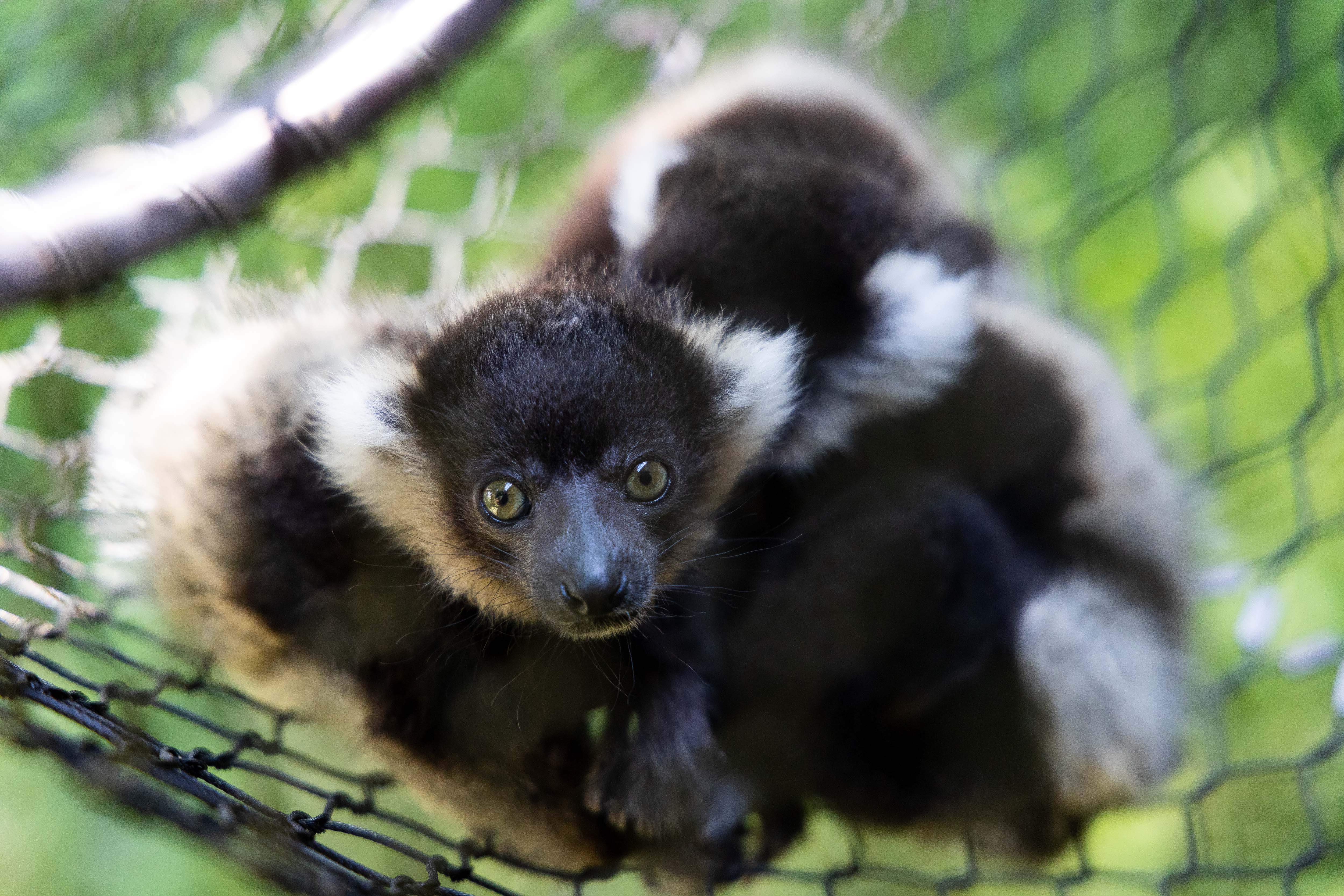29 July 2022
By Tom Collins
tom@TheCork.ie
Fota Wildlife Park announced the birth of three critically endangered Black and white ruffed lemur babies (Varecia variegatea) to 20-year-old mother Cloud and 10-year-old father Paraic.
The three baby lemurs, whose gender is still unknown, were born on the 19th of June after a gestation period of 102 days.
All lemurs are endemic to Madagascar and are now considered to be one of the most threatened mammal families on earth, with 79 of the 81 species considered by the IUCN to be in danger of extinction. Fota Wildlife Park is home to three species of lemur, the Black and white ruffed lemur, Ring-tailed lemur, and Red-bellied lemur and take part in ex-situ breeding and management programmes (EEPs) for all three species.
Madagascar is a truly unique biodiversity hotspot. More than 80% of all the flora and fauna in Madagascar can only be found on the island. However, this unique mosaic of life is under threat from deforestation, hunting and illegal trade in wildlife. These irreplaceable habitats in Madagascar are decreasing rapidly and alarmingly with 90% of native forest cover has now been lost.
In 2019, Fota Wildlife Park opened the Madagascan Village to highlight the plight of the Madagascan ecosystems and biodiversity that are under severe threat and to educate the public on the need for conservation globally.
Senior Ranger Cathriona Ni Scanaill said, “We are delighted with the birth of three new Black and white ruffed lemur babies. Having ongoing success with this critically endangered species indicates how happy and healthy these primates are at Fota. Cloud is a very experienced mother who takes it all in her stride. The three youngsters so far seem very confident and active. Most days, they play in the tunnel leading onto their island habitat.”
Less than 250 Black and white ruffed lemurs remain in the wild today. Ruffed lemurs are an unusual lemur species that display very primitive primate behaviour in that they build and give birth to their young in a nest. The young are almost naked at birth and cannot cling to their mother, as in other primates. The female will often carry the young in her mouth when moving them from one nest to another: however, the young reach maturity more quickly than other lemur species.
Ruffed lemurs are also the world’s largest pollinator. When the ruffed lemur feeds on nectar, by sticking its long nose deep into the flower, the lemur’s snout becomes coated with pollen which is then transported to other flowers – making the animal a vital pollinator of the Traveller’s Palm tree in Madagascar.
Fota Wildlife Park is asking for the public’s help naming the three new arrivals. Though the gender of the new arrivals is not yet known, the public can enter individual name suggestions into a form on the blog at www.fotawildlife.ie/news and be in with a chance of winning one of three year-long Conservation Annual Passes.

